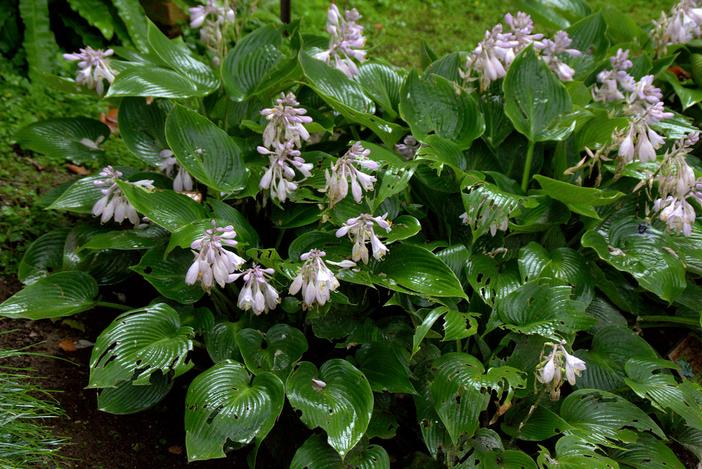Hosta
(Hosta fortunei)
Hosta (Hosta fortunei)
/
/

manuel m. v.
CC BY 2.0
Image By:
manuel m. v.
Recorded By:
Copyright:
CC BY 2.0
Copyright Notice:
Photo by: manuel m. v. | License Type: CC BY 2.0 | License URL: https://creativecommons.org/licenses/by/2.0/ | Uploader: M. Martin Vicente | Publisher: Flickr


















Estimated Native Range
Summary
Hosta fortunei, commonly known as Hosta, is a deciduous perennial herb native to Japan. It typically grows to a height of 2-3 feet (0.6-0.9 meters) and a width of 3-4 feet (0.9-1.2 meters). Hostas are known for their lush foliage and shade tolerance, making them popular in woodland garden settings and as ground covers under trees. The leaves are broad and can vary in color from green to blue-green, often with variegation. In summer, Hosta fortunei produces bell-shaped purple flowers on tall stalks that rise above the foliage, adding a touch of color to the garden. While the flowers are not particularly showy, they do offer a subtle charm.
Hostas are valued for their attractive foliage, which can provide texture and color variation in shaded garden areas. They are commonly used for border planting, as ground cover, and in container gardens. Hosta fortunei thrives in part shade to full shade, preferring consistently moist, well-drained soil rich in organic matter. While often stated to do best in full sun, this is incorrect, as their leaves can scorch in too much direct sunlight. The cultivars ’Blue Angel’, ’Blue Mammoth’, and ’Olive Bailey Langdon’ have been recognized with the RHS Award of Garden Merit for their exceptional qualities. Potential problems include slug and snail damage, and in some regions, deer may browse on the leaves.CC BY-SA 4.0
Hostas are valued for their attractive foliage, which can provide texture and color variation in shaded garden areas. They are commonly used for border planting, as ground cover, and in container gardens. Hosta fortunei thrives in part shade to full shade, preferring consistently moist, well-drained soil rich in organic matter. While often stated to do best in full sun, this is incorrect, as their leaves can scorch in too much direct sunlight. The cultivars ’Blue Angel’, ’Blue Mammoth’, and ’Olive Bailey Langdon’ have been recognized with the RHS Award of Garden Merit for their exceptional qualities. Potential problems include slug and snail damage, and in some regions, deer may browse on the leaves.CC BY-SA 4.0
Plant Description
- Plant Type: Herb
- Height: 2-3 feet
- Width: 3-4 feet
- Growth Rate: Moderate
- Flower Color: Purple
- Flowering Season: Summer
- Leaf Retention: Deciduous
Growth Requirements
- Sun: Part Shade, Full Shade
- Water: Medium
- Drainage: Slow, Medium, Fast
Common Uses
Bee Garden, Bird Garden, Border Plant, Butterfly Garden, Groundcover, Hummingbird Garden, Low Maintenance, Salt Tolerant
Other Names
Common Names:
Scientific Names: , Hosta fortunei, Hosta montana, Hosta tokudama, Hosta sieboldiana var. elegans, Hosta fluctuans, Hosta elata, Hosta crispula, Hosta sieboldiana var. sieboldiana, Hosta sieboldiana var. gigantea
GBIF Accepted Name: Hosta sieboldiana var. sieboldiana